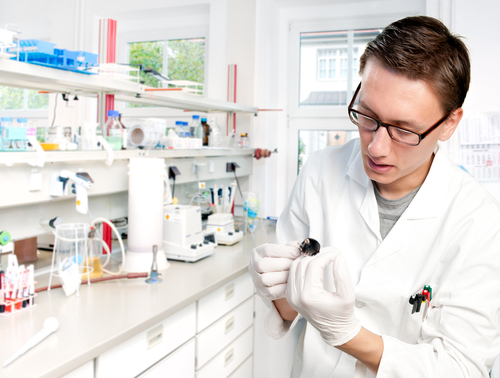Abnormalities in intestinal stem cell niches may predict recurrence in Crohn’s disease, a new study suggests.
These irregularities may result from problems with mitochondria — the so-called powerhouse of cells or the organelles important for providing energy to cells, among other functions. Targeting these mitochondrial problems may be an avenue for new treatments.
The study, “Mitochondrial impairment drives intestinal stem cell transition into dysfunctional Paneth cells predicting Crohn’s disease recurrence,” was published in the journal Gut.
Intestinal stem cells (ISCs) are cells in the gut capable of renewing and differentiating into other types of cells. These cells are critical to gut health but, to function properly, they require a tightly regulated environment, termed the stem cell niche. In the intestine, Paneth cells help to guard and maintain the stem cell niche for ISCs.
Previous studies have found fewer Paneth cells in patients with inflammatory bowel diseases, and that their impaired function contributes to the development of Crohn’s disease. Moreover, mitochondria are thought to be critical for ISC-renewal and differentiation.
In the new study, a team led by researchers in Germany investigated the role of mitochondrial function for ISC niche-maintenance and Paneth cell numbers under inflammatory conditions.
They first examined stem cell niches in a mouse model of Crohn’s disease-like intestinal inflammation. They noticed fewer ISCs in the niches in regions with more inflammation. Simultaneously, there was evidence of reduced Paneth cell activity, based on the molecular markers expressed by the cells.
“The parallel decrease of PC [Paneth cells] function and stemness indicates the tight functional interrelation of the ISC niche under inflammatory conditions,” the researchers wrote.
The team then examined intestine samples from 70 people with Crohn’s disease, which were collected as part of a previous study in which individuals were assessed for disease recurrence. The same pattern was observed in these samples: more inflammation was associated with Paneth cell dysfunction and fewer ISCs.
The previous study showed that inflammation was predictive of disease recurrence; however, flare-ups also occurred in many people without inflammation, indicating that inflammation might not be a good predictor of recurrence.
Thus, the researchers examined whether changes in stem cell niches might better predict recurrence, and found that fewer ISCs and Paneth cell dysfunction were significant predictors.
“Disease-associated changes in [Paneth cells] and ISC appearance persisted in non-inflamed tissue regions of patients with CD [Crohn’s disease] and predicted the risk of disease recurrence after surgical resection,” the researchers wrote.
“These changes in the stem cell niche are a very early indicator for the start of inflammatory processes,” Dirk Haller, PhD, study co-author and professor at the Technical University of Munich, said in a university news story.
“Therefore, the appearance of the stem cell niche can be used to evaluate the probability of a disease recurrence after the resection of originally affected parts of the small intestine,” Haller added. “This presents a reasonable starting point for therapeutic intervention.”
The team further investigated the mechanisms underlying this link. They found, under inflammatory conditions, signs of mitochondrial dysfunction around the stem cell niche.
To confirm a role of mitochondria in stem cell niche dysfunction, the team used mice genetically engineered to have mitochondrial dysfunction. In these mice, similar changes at the stem cell niche — reduced ISCs and less-functional Paneth cells — were observed.
More specifically, the data suggested that mitochondrial dysfunction prompted the ISCs to differentiate (grow into) Paneth cells but they were limited in their functionality.
ISC niches can be grown in dishes to form organoids or miniaturized versions of the intestine. The researchers found that while non-inflamed niches from mice with Crohn’s disease were able to grow into organoids, inflamed niches were not able to do so. This is indicative of a lack of stem cell functionality (stemness) in cells from inflamed niches.
However, when researchers treated inflamed niches with dichloroacetate (DCA) — a chemical that promotes mitochondrial function — they were able to grow into organoids. Interestingly, organoid formation was not different if DCA was administered continually, or only at first and then stopped.
“The persisting regain of stemness after withdrawal of DCA underlines the reversible nature of ISC alterations under inflammatory conditions, making ISC niche metabolism an attractive target for therapeutic interventions,” the researchers wrote.
Collectively, the data suggest that abnormalities in the stem cell niche precede recurrence in Crohn’s disease, and that these abnormalities are related to mitochondrial dysfunction.
“These findings point to a new therapeutic approach for prolonging the inflammation-free remission phases of Crohn’s disease,” Eva Rath, PhD, study co-author and researcher at TUM, concluded.

